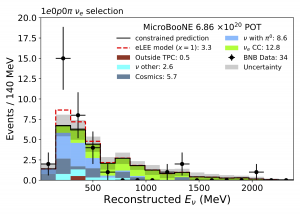We present a measurement of νe interactions from the Fermilab Booster Neutrino Beam using the MicroBooNE liquid argon time projection chamber to address the nature of the excess of low energy interactions observed by the MiniBooNE collaboration. Three independent νe searches are performed across multiple single electron final states, including an exclusive search for two-body scattering events with a single proton, a semi-inclusive search for pionless events, and a fully inclusive search for events containing all hadronic final states. With differing signal topologies, statistics, backgrounds, reconstruction algorithms, and analysis approaches, the results are found to be consistent with the nominal νe rate expectations from the Booster Neutrino Beam and no excess of νe events is observed.
Links
A link to the paper submitted to Phys. Rev. Lett. is posted on the archive at arXiv:2110.14054.
Links to the three MicroBooNE electron-neutrino analyses:
A link to the MicroBooNE GENIE tune used in the above analyses is available here.
Figures
Please refer to the paper linked above for more detailed captions on the plots below.

Fig 1. Reconstructed neutrino energy for 1e1p CCQE candidate events in the deep-learning-based analysis.
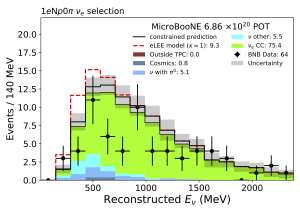
Fig 2a. Reconstructed neutrino energy for pionless νe candidate events in the Pandora-based analysis for 1eNp0π.
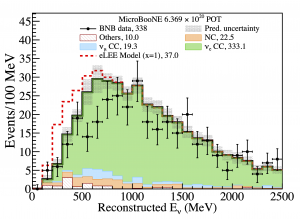
Fig 3. Reconstructed neutrino energy for inclusive νe candidate events in the Wire-Cell based analysis.
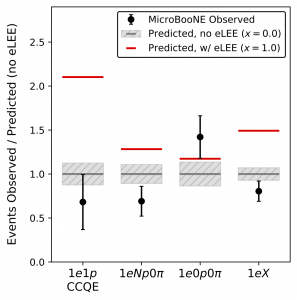
Fig 4. Ratio of observed to predicted νe candidate events – assuming no eLEE – in each analysis’s signal-enhanced neutrino energy range.
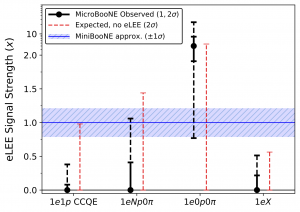
Fig 5. Result of best-fit eLEE signal strength (x) in each analysis (black), along with the 1 and 2σ confidence inter- vals (solid and dashed lines, respectively).


